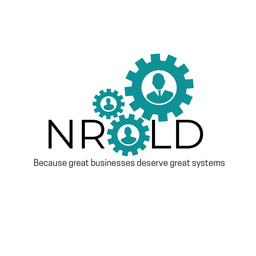DIY MBA with YouTube, Coursera & Notion
Thanks to an explosion of high-quality online learning, you can now build your own personalized business education using powerful and affordable tools.

Welcome to the DIY MBA.
This is not about randomly watching a few videos; it is about creating a structured, comprehensive curriculum that is tailored to your specific goals.
This guide will show you how to use three key tools to build your own MBA:
- Coursera: Your "University," providing structured courses from the world’s best business schools.
- YouTube: Your "Library and Guest Lecturers," offering endless practical tutorials and expert interviews.
- Notion: Your "Campus and Notebook," an all-in-one workspace to organize your curriculum, take notes, and track your progress.
Step 1: Lay the Foundation by Designing Your Curriculum
The first mistake many self-learners make is a lack of focus. A traditional MBA succeeds because it has a structured curriculum. You need to create your own. The goal is to cover the core pillars of business.
The Framework: The Core Competency Checklist
A good MBA program covers a range of essential subjects. Your first step is to list these subjects, which will become the modules of your DIY MBA.
Here are the core business pillars to include:
- Finance: Understanding how money works in a business. (Valuation, financial modeling, corporate finance).
- Accounting: The language of business. (Reading financial statements, managerial accounting).
- Marketing: How to find and keep customers. (Market research, branding, digital marketing, pricing).
- Strategy: How a business makes decisions to win in its market. (Competitive analysis, business models, long-term planning).
- Operations: How a business delivers its product or service efficiently. (Supply chain management, project management).
- Leadership & Management: How to lead teams and manage people effectively. (Organizational behavior, communication, negotiation).
- Data Analytics: How to use data to make smart decisions.
- Economics: Understanding the broader market forces that affect your business.
Actionable Advice: You do not have to give equal time to every subject. Prioritize based on your goals. If you are an entrepreneur trying to get your startup off the ground, you might focus heavily on Marketing and Finance first. If you are a manager trying to move up, you might focus on Leadership and Strategy.
Step 2: Curate Your Learning Resources with Coursera and YouTube
Now that you know what you need to learn, you can start finding the best resources. The key is to blend the structured, academic approach of Coursera with the practical, diverse content on YouTube.
The Framework: The "1 Core + 3 Supports" Method
For each subject in your curriculum, find one core resource and three supporting resources.
- Your Core Resource (from Coursera): This will be a comprehensive, structured course or "Specialization" from a top university. These often include projects and quizzes that force you to apply what you've learned. You can "audit" most courses for free to watch the videos, or pay a small fee to get the full experience and a certificate.
- Examples: The Wharton School's "Business Foundations Specialization," the University of Michigan's "Successful Negotiation," or the University of Illinois' "Financial Management" specialization.
- Your Supporting Resources (from YouTube): These will supplement your core course with different perspectives, practical tutorials, and real-world case studies.
- Finance Examples: The channels of Aswath Damodaran (a top NYU finance professor) or CFI (Corporate Finance Institute).
- Marketing Examples: The channels of HubSpot Academy, Marketing Examples, or Ahrefs (for SEO).
- Strategy Examples: The channels of Y Combinator (for startups), Slidebean, or case study channels like Business Casual.
By combining these, you get the best of both worlds: a solid academic foundation and a constant stream of practical, up-to-date knowledge.
Step 3: Build Your Campus in Notion
This is the most critical step for making your DIY MBA feel like a real program. Notion will be your central hub—the place where you organize your learning, synthesize your notes, and track your progress. Without this, your learning will be a scattered mess of bookmarks and half-watched videos.
The Framework: The "DIY MBA Dashboard"
Create a master page in Notion called "My DIY MBA." This dashboard will contain everything you need. Here's how to build it:
1. Create Your Curriculum Tracker.
This is a database (a simple table) that lists every course and resource you plan to use.
- Columns:
- Subject: (e.g., Marketing, Finance)
- Course/Resource Name: (e.g., "Wharton Business Foundations")
- Platform: (e.g., Coursera, YouTube)
- Status: (A dropdown menu with "Not Started," "In Progress," "Completed")
- Link: (A direct link to the course or channel)
2. Create a Page for Each Subject.
Turn each subject in your curriculum tracker into its own page within Notion. On the "Marketing" page, you can:
- Embed the most important YouTube videos.
- Write your notes from your Coursera course using toggles to keep them organized.
- Link to any articles or podcasts you find.
3. Build a "Knowledge Hub."
This is where you connect ideas from different subjects. Create notes like "Key Lessons on Pricing." In this note, you can link to ideas you learned from your marketing course, your finance course (on contribution margin), and your strategy course (on competitive pricing). This is how you build deep, cross-functional understanding, just like in a real MBA.
Step 4: Apply Your Knowledge with Project-Based Learning
The biggest difference between passive learning and a real education is application. An MBA forces you to apply what you learn through case studies and projects. You must do the same.
The Framework: Your Capstone Project
Choose one business—it could be your own, a friend's, a famous company like Nike, or a fictional one—to be your case study for your entire DIY MBA.
- When you study Accounting: Analyze your case study company's real financial statements.
- When you study Marketing: Build a complete marketing plan for one of their products.
- When you study Finance: Create a simple financial model to value the company.
- When you study Strategy: Write a deep-dive analysis of their competitive advantages and disadvantages.
Document all of this work within your Notion pages. By the end, you will not just have a head full of knowledge; you will have a portfolio of tangible, real-world business projects that prove your skills.
Action builds business. Start small, start smart—then scale.

This content is AI-assisted and reviewed for accuracy, but errors may occur. Always consult a legal/financial professional before making business decisions. nrold.com is not liable for any actions taken based on this information.


